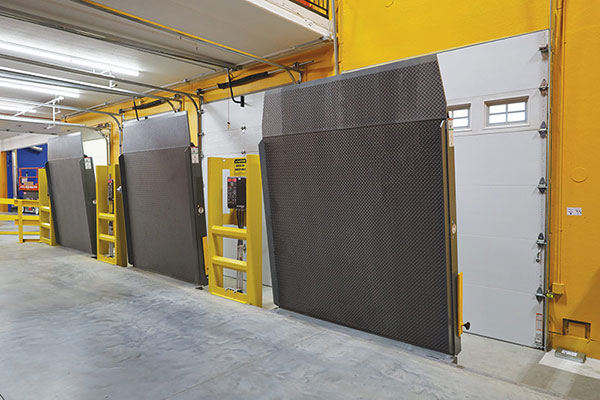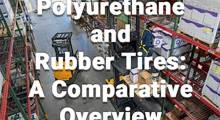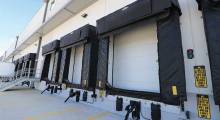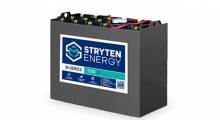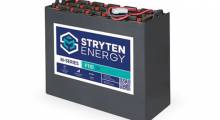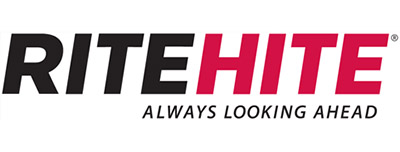Successful companies with expanding distribution operations often have multiple objectives when they add docks and dock equipment. The equipment needs to be reliable, quick to engage and deploy during operations, but many companies prize other factors such as the ease of maintaining the equipment and the comfort level the engaged leveler provides when lift trucks enter or exit a trailer.
For Glenroy, a supplier of customized packaging and printing products, specializing in flexible packaging laminations and stand-up pouches, the serviceability of its dock equipment and reducing jolts and jarring for lift truck operations were priorities for the company when it chose new dock levelers.
Based near Milwaukee, Wisc., in Menomonee Falls, Glenroy’s growth has been fueled by its high-barrier laminations for hard-to-hold products. Glenroy’s customers range from small manufacturers to Fortune 500 companies in various industries.
Arbon Equipment, a Rite-Hite Company, worked with Glenroy to identify and address their needs and continues to assist with service needs. Glenroy chose Rite-Hite’s RHV vertical storing levelers, which offer multiple benefits when compared to traditional pit-style levelers.
From a maintenance standpoint, they are safer and easier to work on since staff members don’t have to crawl underneath to perform service in the pit. They also feature Safe-T-Pit, a safety sensor that disables leveler operation when personnel movement is detected, and if interlocked, disables operation until the pit is cleared and the operator is at the control panel.
The RHV is a power-up/power-down unit that requires constant pressure on the controls to keep the operator in control of leveler movement. Removing pressure from the “raise” or “lower” buttons immediately stops movement of the leveler.
“The vertically stored levelers are a drastic improvement for our maintenance team,” says Kevin Kluck, Glenroy’s maintenance and facility manager. “We’ve definitely been happy with their serviceability. Our PM (planned maintenance) times are much shorter now.”
Vertical storing levelers also have an operational benefit. When designed as part of a “drive-through” dock configuration (as on two of Glenroy’s new docks), they allow workers to securely open trailer doors on the inside of the building, rather than placing pedestrians outside to unseal and open the doors before the trailer is fully backed into position.
This design keeps boots off the ground on the dangerous drive approach, but also minimizes air and pest infiltration, and enhances cargo security and supply chain integrity. Since vertical levelers allow overhead dock doors to close directly onto the ground, they minimize the outside air, dust and humidity intrusion that can occur around gaps.
“These vertically stored levelers allow us to close the overhead door and not see any ‘white light’ from leveler gaps,” said Kluck. “Our auditors prefer this style over traditional pit-style levelers.”
The levelers are engineered to provide the smoothest possible transition for forklifts moving from the warehouse floor to the trailer bed. Features of the Smooth Transition Dok System minimize the jolt or dock shock that can occur at dock transitions, helping to reduce the potential for chronic back injuries or damage to products and equipment.
“The new levelers seem to provide a smoother transition from concrete to leveler to truck and back out for the forklift drivers who go over them multiple times a day,” Kluck says.
Glenroy was faced with another challenge on the interior of its manufacturing building, where one of its processes required very different air pressure, temperature and humidity levels than the rest of the plant. To address that issue, Glenroy added another Rite-Hite product, Zoneworks industrial curtain walls, to separate the areas and keep the processes on each side from interacting with each other. To minimize the air exchange caused by employees passing between the zones, Rite-Hite’s FasTrax doors were installed both in the curtain walls and adjacent to them.
Zoneworks SCL Series curtain walls allow users to create new environmental zones quickly and easily without the need for permanent walls or rigid panelized systems. Rite-Hite’s FasTrax doors are one of the industry’s fastest with a speed of 100 inches per second, which helps minimize the air intrusion between zones.

Industrial curtain walls are used to separate areas in the facility.
The doors also have safety benefits with standard features such as soft breakaway technology, thru-beam photo eyes, LED countdown lights and Virtual Vision, which alerts pedestrians or vehicles on each side to any presence on the other.
“By choosing vertical levelers, we prioritized the safety and comfort of the forklift operators who’d be driving over the loading dock levelers, and the maintenance techs who would be servicing them,” noted Kluck. “In the production area, we have been very happy with how the Zoneworks walls and FasTrax doors help keep temperature, air pressure, and humidity isolated between sections of the building.”
Article topics
Learn More
